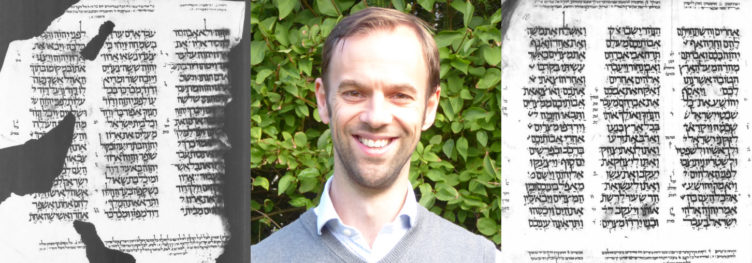Dr Kim Phillips, a research associate at Tyndale House, Cambridge, makes the argument in a recent issue of the Tyndale Bulletin (68.1), “A New Codex from the Leningrad Codex: L17“:
Samuel b. Jacob was the scribe responsible for the production of the so-called Leningrad Codex (Firkowich B19a), currently our earliest complete Masoretic Bible codex. This article demonstrates that another codex from the Firkowich Collection, containing the Former Prophets only, is also the work of Samuel b. Jacob, despite the lack of a colophon to this effect. The argument is based on a combination of eleven textual and para-textual features shared between these two manuscripts, and other manuscripts known to have been produced by the same scribe.
Searching the article, I was surprised not to find the precise url for the two catalogued sections of this manuscript, L17—EVR I Bibl. 80 and EVR I B 13, respectively. So I retrieved the following permalinks for each, followed by links for viewing these manuscripts:
(1) EVR I Bibl. 80.
Catalogued item:
http://primo.nli.org.il/primo_library/libweb/action/dlDisplay.do?vid=NLI&docId=NNL_ALEPH000151648
Digitised Microfilm:
(2) EVR I B 13.
Catalogued item:
http://primo.nli.org.il/primo_library/libweb/action/dlDisplay.do?vid=NLI&docId=NNL_ALEPH000151620
Digitised Microfilm: http://web.nli.org.il/sites/nli/english/digitallibrary/pages/viewer.aspx?presentorid=MANUSCRIPTS&docid=PNX_MANUSCRIPTS000151620-1
More from the Tyndale House announcement:
Tyndale House Research Associate Dr Kim Phillips identifies the writing style of Samuel ben Jacob in newly published digitised photographs of a manuscript from the Firkowich collection in the depths of the National Library of Russia archives of St Petersburg.
…Samuel ben Jacob is the scribe who wrote the Leningrad Codex, the earliest complete copy of the Old Testament which is reproduced in the Biblia Hebraica Stuttgartensia. This manuscript is behind most modern translations. Identifying this piece of work to be by the same scribe will allow scholars to check the accuracy of tiny details in the manuscript behind most modern Bible translations. This will then contribute to future scholarly Bibles.
